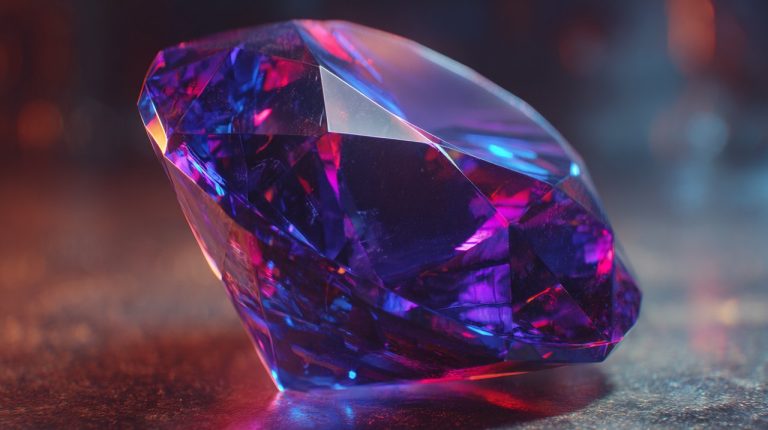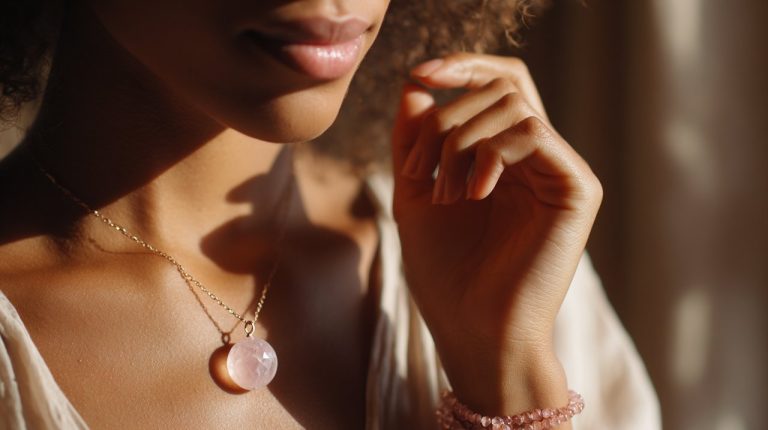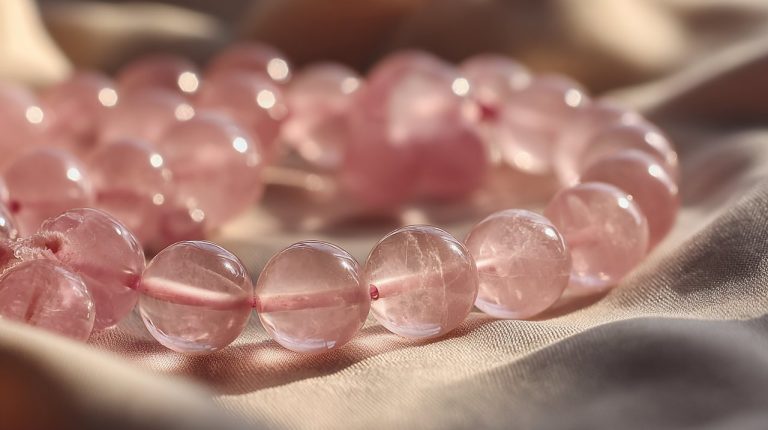Jade Valuation Guide: Understanding Market Value and Key Factors
Understanding Jade’s Market Value: A Comprehensive Guide
Understanding the true monetary value of jade is a journey far more intricate than simply admiring its celebrated beauty. This esteemed gemstone commands prices that span from modest sums to millions, a variance driven by a precise interplay of unique characteristics.
For those looking to assess its market worth, a detailed, expert-driven analysis isn’t just helpful—it’s essential. This guide aims to demystify the complex world of jade valuation, exploring the fundamental distinctions between its two primary types, jadeite and nephrite, and breaking down the specific attributes that profoundly influence their market price.
Jade Market Overview: Price Ranges for Jadeite and Nephrite
To provide an initial perspective on jade’s diverse market, the table below presents typical price ranges for its two primary mineral forms. Think of these figures as a starting point; the actual value of any specific piece is profoundly influenced by the detailed factors we’ll explore in the following sections.
| Type | Description | Price Range |
|---|---|---|
| Jadeite | High-quality jadeite, especially "Imperial Green" from Myanmar. Prices vary widely. | From tens to millions of dollars per carat |
| Nephrite | More affordable than jadeite, but high-quality nephrite can also be valuable. | From a few dollars to over $1,000 per carat |
Jadeite vs. Nephrite: Fundamental Valuation Differences
While often grouped under the single, familiar term “jade,” this gemstone actually comprises two distinct mineral species: jadeite and nephrite. Understanding this fundamental geological distinction is the crucial first step in comprehending jade’s true market value.
These two types differ significantly in rarity, chemical composition, physical properties, and market demand, leading to vast disparities in price. It’s not just a matter of different names; it’s a difference in their very essence and how they are valued.
Jadeite, particularly the vibrant “Imperial Green” variety primarily sourced from Myanmar (Burma), is globally recognized as the most precious type. Its superior hardness (6.5-7 on the Mohs scale), characteristic vitreous luster, and often remarkable translucency all contribute to its exceptional value.
This makes jadeite a cornerstone for high-end jewelry and investment pieces. Top-grade, untreated jadeite can fetch millions of dollars per carat at prestigious auction houses, reflecting its extreme rarity and desirability among collectors and connoisseurs.
In contrast, nephrite is generally more abundant and considerably more affordable than jadeite. It typically exhibits a wider range of colors, including various shades of green, white, black, and earthy tones. High-quality nephrite is prized for its exceptional toughness (6-6.5 on the Mohs scale) and its smooth, often greasy texture.
Historically, its durability made it ideal for intricate carvings. While fine nephrite can certainly be valuable, its per-carat price rarely approaches that of premium jadeite, making it more accessible for broader applications and everyday adornment.
The true value of jade is not merely in its rarity, but in a delicate interplay of its intrinsic gemological characteristics, historical provenance, and the artistry of its craftsmanship.
Key Factors Influencing Jade’s Monetary Price
Beyond the fundamental distinction between jadeite and nephrite, several specific, quantifiable characteristics meticulously determine a jade piece’s worth. Understanding these factors is paramount for any serious appraisal, purchase, or investment decision, as they directly impact its market value.
Color: The Foremost Price Determinant
Color stands as the most critical factor influencing jade’s monetary value. The ideal color is intense, pure, and uniformly distributed throughout the stone. For jadeite, the pinnacle is “Imperial Green“—a vivid, highly saturated, emerald-like green that exhibits remarkable translucency and appears to glow from within.
This exceptionally rare hue, found almost exclusively in Myanmar, commands the absolute premium prices in the market, often reaching millions per carat for top-tier specimens. It’s the gold standard against which all other jadeite is measured.
Other highly valued jade colors, each with distinct market demand, include:
- Lavender: A rich, deep purple, particularly in high-quality jadeite, where vibrant saturation is key.
- Red/Orange: These vibrant, saturated, and uniform tones result from iron impurities and are highly sought after.
- Yellow: Bright, clear yellow hues, especially those with good translucency, are also desirable.
- Black/White: While more common, pure, uniform black or milky white jade (especially nephrite) can hold significant value, particularly when well-carved or exhibiting exceptional purity.
The saturation, uniformity, and purity of color profoundly impact market price. Any mottling, dullness, or uneven distribution will substantially reduce a piece’s value, regardless of its other attributes.
Translucency and Texture: Clarity and Feel
Translucency refers to how effectively light passes through the jade, allowing the stone to appear vibrant and alive. Highly translucent jade, often described as “glassy,” “watery,” or “gelatinous,” permits light to penetrate and reflect beautifully, enhancing its perceived depth and vibrancy.
This quality significantly increases value, especially in jadeite, as it signifies high-grade material. Such stones appear more luminous and possess greater visual depth, directly correlating to higher market demand.
Texture describes the fineness of the jade’s grain. The finest jade exhibits an incredibly smooth, uniform, and almost porcelain-like texture, with no visible granular structure even under magnification. A superior, fine texture is intrinsically associated with higher translucency, contributing to the stone’s overall aesthetic appeal, durability, and perceived quality, thereby enhancing its value.
Craftsmanship and Design: Artistry’s Impact
For carved pieces, sculptures, or intricate jewelry, the artistry and skill of the craftsmanship are paramount. A flawlessly executed carving demonstrates intricate details, balanced proportions, and a harmonious design that respects the jade’s natural contours and color variations.
Such mastery can dramatically increase a jade piece’s value, sometimes by multiples of the raw material’s worth. It transforms a beautiful stone into a work of art.
The precision of the cutting, the quality of the polishing, and the overall finish also play a vital role in its market desirability. Even for uncarved pieces, such as cabochons or beads used in jewelry, the precision of the cut and the stone’s proportion are crucial for maximizing its visual impact and inherent value.
Origin and Rarity: Provenance Matters
The geographical origin of jade significantly influences its value, particularly for jadeite. Burmese jadeite, especially the “Imperial Green” variety from the Kachin State, is widely considered the benchmark for quality.
It consistently commands premium prices due to its historical reputation, superior characteristics, and limited supply. Other jadeite origins, such as Guatemala, Russia, and Japan, typically do not yield material as highly prized for top-tier investment pieces.
Rarity also plays a crucial role in valuation. Unique color combinations, exceptionally large sizes of fine quality, or pieces with documented historical significance (e.g., belonging to a renowned collection or royal family) can fetch substantially higher prices at auction. Such scarcity directly drives market demand and, consequently, price, appealing strongly to collectors and connoisseurs.
Treatments and Certification: Authenticity and Value
Jade can undergo various treatments to enhance its appearance, which can drastically impact its market value. Common treatments include:
- Dyeing (C-jade): To improve or change color.
- Polymer Impregnation (B-jade): Filling microscopic fissures with polymer to improve translucency and texture.
- Heat Treatment: To alter color or remove impurities.
While these treatments may make the jade look more appealing, they significantly reduce the stone’s natural, inherent value. It is crucial to distinguish between natural, untreated jade (Type A), which retains its full market value, and treated jade (Type B, C, or B+C), which is worth considerably less—often a mere fraction of Type A prices.
Therefore, gemological certification from reputable, independent laboratories (e.g., GIA, GRS, Mason-Kay) is highly recommended for any significant jade purchase. A certificate verifies the jade’s authenticity, identifies its type (jadeite or nephrite), and, most importantly, confirms whether it is natural and untreated.
This independent documentation is essential for establishing trust, ensuring transparency, and guaranteeing a fair valuation, protecting both buyers and sellers in the market. It’s your safeguard against misrepresentation.
Beyond Monetary Value: Cultural and Historical Significance
While our primary focus has been market valuation based on gemological criteria, it is essential to acknowledge jade’s profound cultural and historical significance. This aspect contributes immensely to its revered status across civilizations.
For millennia, jade has been cherished not merely as an ornamental stone but as a powerful symbol of power, spirituality, and enduring beauty. Its story is deeply interwoven with human history.
In ancient China, jade was revered as the “imperial gem,” reserved exclusively for emperors and their royal courts. It symbolized wealth, wisdom, immortality, and divine authority. Elaborate jade artifacts were meticulously crafted for rituals, burials, and as emblems of high status.
Similarly, the Mayans of Central America believed jade connected the living with the spiritual realm, extensively using it in religious ceremonies and as sacred offerings to their gods. Across diverse cultures, jade has always been more than just a stone.
Across millennia, jade has transcended mere ornamentation, embodying power, spirituality, and enduring beauty in diverse cultures, shaping its enduring appeal.
Personal and Metaphysical Value
For many individuals, jade’s appeal extends beyond its physical characteristics and historical legacy to its purported metaphysical properties. It is widely believed to bring harmony and balance, promoting peace, tranquility, and emotional well-being.
Jade is also associated with abundance, good fortune, and protection from harm, making it a popular choice for talismans and personal adornment in various cultures. These beliefs add a deeply personal layer to its worth.
It is crucial to note that while these beliefs contribute significantly to jade’s personal and cultural value, they do not directly influence its market price as determined by established gemological standards. Nevertheless, this aspect of jade’s allure remains a powerful and enduring draw, adding another dimension to its multifaceted worth for countless individuals worldwide.
Conclusion: A Gemstone of Intrinsic and Multifaceted Worth
Determining “how much jade is worth” necessitates a nuanced and expert understanding of its complex characteristics. From the fundamental distinction between jadeite and nephrite to the critical impact of color, translucency, craftsmanship, origin, and verified certification, each factor plays a vital and interconnected role in its market valuation.
Overlooking any of these aspects can lead to significant misjudgments of true value. So, as we’ve explored, the journey to valuing jade is comprehensive, requiring a keen eye and a deep understanding of its many facets.
Jade is a gemstone of unparalleled beauty, rich history, and profound cultural significance. A thorough understanding of its true market value empowers you to appreciate this magnificent stone on every level, whether you are drawn to its vibrant green hues, intrigued by its ancient legacies, or seeking its reputed metaphysical benefits.
Its unique blend of intrinsic gemological quality, historical reverence, and deeply personal meaning ensures its enduring place as a truly priceless treasure, both materially and culturally. It’s a stone that rewards careful consideration and deep appreciation.
💡 Frequently Asked Questions
The article mentions two main types of jade: Jadeite and Nephrite. High-quality Jadeite, especially 'Imperial Green,' can range from tens to millions of dollars per carat, while Nephrite is more affordable, typically from a few dollars to over $1,000 per carat.
Jade has been revered by various cultures, including ancient Chinese emperors and Mayans. It was considered an 'imperial gem' in China, symbolizing power and prestige, and Mayans believed it connected the living with the spiritual realm.
Jade is believed to bring harmony and balance, promote peace and tranquility, symbolize abundance and good fortune, protect the wearer from harm, and attract positive energy.
Jade is known for its unique green color, smooth texture, and incredible durability, making it one of the toughest gemstones suitable for intricate carvings and jewelry.







